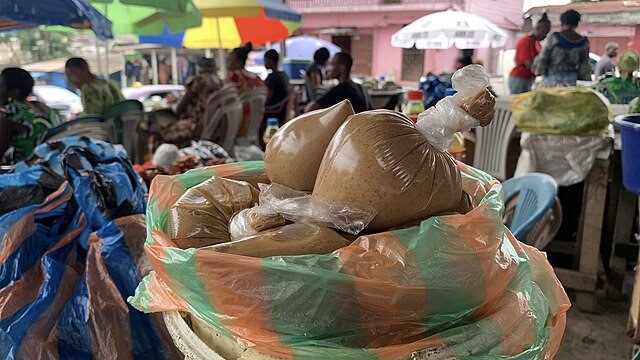The air inside Libreville’s Marché du Mont-Bouet is heavy with the scent of ripened fruit and wood smoke, mingling with the murmur of vendors and the steady rhythm of bargaining. Here, in the capital’s largest and most animated market, Gabon’s culinary traditions are not displayed as curiosities but lived as part of daily life.
Tables sag under the weight of pineapples and mangos, their bright skins glistening in the heat. Palm nuts, stacked in baskets, hint at the rich oils central to many Gabonese dishes, while stalls of leafy greens and root vegetables testify to the agricultural abundance of the region. For shoppers, the market is not only a source of nourishment but a mirror of the land’s fertility and the intricate knowledge carried by those who cultivate it.
Beyond the produce stands, the ocean makes its presence felt. Freshly caught fish—grouper, snapper, sardines—are laid out in neat rows, while nearby, crabs and shrimp writhe in woven baskets. Grilled fish seasoned with chilies and okra simmers in thick “sauce gombo,” a pungent dish that draws its strength from local ingredients and coastal traditions. In Gabonese cooking, seafood is more than sustenance; it is a thread connecting families to the sea and the rituals of daily life along the coast.
Street food vendors contribute their own rhythms to the market’s symphony. The crackle of skewered chicken turning over open flames signals the presence of poulet braisé, its skin brushed with marinades of garlic, ginger, and chili. Nearby, cooks stir heavy pots of cassava or plantain fufu, a starchy base meant to anchor rich stews. Each dish, offered quickly and eaten communally, carries with it the imprint of generations—flavors both familiar and celebratory.
The spice stalls, smaller but no less significant, complete the tableau. Piles of dried peppers, bulbs of garlic, and thumb-sized pieces of ginger sit beside jars of aromatic powders. Their presence underscores the role of seasoning as more than mere flavoring—these are the building blocks of memory, used to recreate dishes that bridge families and communities.
Markets such as Mont-Bouet are not solely commercial spaces. They are social crossroads, where recipes are exchanged, gossip is traded, and bonds are reinforced. In the bustling corridors, one sees not just the mechanics of buying and selling but the everyday rituals of a city in motion.
Libreville’s markets tell the story of Gabon in edible form: abundant, diverse, rooted in land and sea, yet constantly evolving. To walk through them is to understand how food here is both an economic lifeline and a cultural compass, guiding the rhythms of daily life in one of Central Africa’s most dynamic capitals.
Sources
- Grinker, Roy Richard, et al. Perspectives on Africa: A Reader in Culture, History, and Representation. Wiley-Blackwell, 2010.
- Perrois, Louis. Arts du Gabon. Orstom Éditions, 1985.
- Encyclopaedia Britannica. “Gabon: Cultural Life.” Accessed 2025.
- Food and Agriculture Organization of the United Nations (FAO). “Fisheries and Aquaculture in Gabon.” Accessed 2025.

